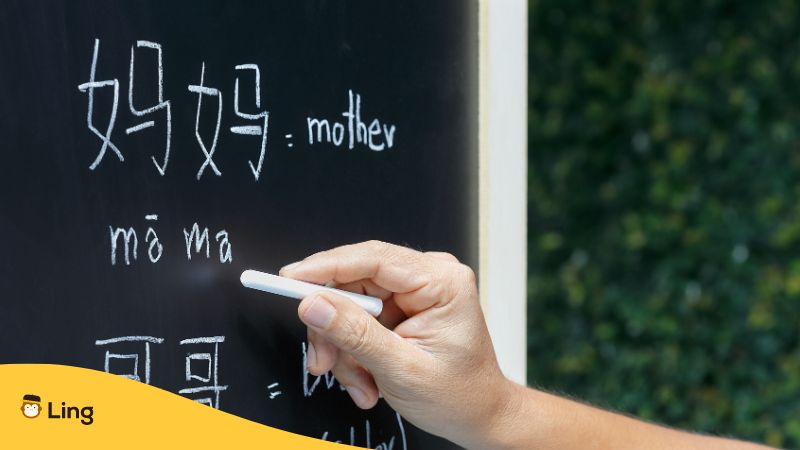We all know that Chinese characters are pretty complicated. After all, the Chinese writing system is one of the most difficult scripts in the world. And guess what? It doesn’t end there – Chinese pronunciation is just as, if not maybe even slightly more, difficult!
Unlike English, Chinese is a tonal language. That means it’s a language where the same syllable is pronounced with different tones to distinguish what it means! So you’ve really got to pay attention to which of the four Chinese tones someone is using, or else you might misunderstand them!
As intimidating as Chinese pronunciation may sound, it’s definitely not impossible to get the hang of it. In this article, I’ll be sharing some tips that’ll help you master Chinese pronunciation. If you’re all ready to conquer Chinese sounds, read on!

Tips To Perfect Your Chinese Pronunciation
Tip #1: Start Slowly
Ever heard of the phrase, “slow and steady wins the race”? Just like the tortoise in the famous Aesop’s fable, taking your time and proceeding steadily is the most effective approach to learn Mandarin pronunciation. So, remember not to rush through your learning spoken Chinese!
You can start with easy single Chinese characters before eventually moving on to Chinese words. Focus on pronouncing each syllable accurately, just like how you’d savor each bite of your favorite Chinese dish. Go at your own pace and take your time to practice Mandarin pronunciation consistently.
Whether you choose to work on the pronunciation of your favorite Chinese song or story, remember, consistency is key. You’ll be sure to quickly master Chinese pronunciation so long as you’re dedicated and patient to learning Chinese sounds!

Tip #2: Listen And Repeat
Be it your friends or your favorite actors, imitating native Chinese speakers is a great way to improve your pronunciation. By listening closely to how they speak Chinese, from the way they pronounce words to the way they pronounce phrases, you can easily pick up the nuances and learn Mandarin pronunciation effectively.
So, grab your fellow learners and put on a Chinese podcast, a Chinese movie, or maybe even your favorite Chinese song! You can even opt to listen to video lessons conducted by native speakers or listen to audio files of native speakers if that’s what you’d prefer.
Remember, pay attention to the rhythm, intonation, and cadence of the beautiful Chinese language. And of course, don’t be afraid to mimic what you hear! Even if you encounter difficult sounds, try to imitate them as closely as possible, or use similar sounds to break down the pronunciation first before trying your hand at it. Just tackle Chinese sounds one syllable at a time and you’ll be fine!

Tip #3: Pay Attention To Tones
There are four tones in Chinese. The first tone is yī shēng (一声), the second tone is èr shēng (二声), the third tone is sān shēng (三声), and the fourth tone sì shēng (四声). But did you know there’s kind of like a fifth tone as well? This tone is typically called the neutral tone, or qīng shēng (轻声) in Chinese.
Just like its name suggests, the neutral tone is supposed to be light as a feather! That means you don’t have to emphasize it as much as the other tones. In fact, it should sound a little shorter than the other tones as well. Think of it as a light tap or a quick flick with no specific pitch variation. An example of a word that’s said in the neutral tone would be de (的), which indicates possession or belonging.
The first tone is kind of high and flat at the same time. Some people even think it sounds a little more robotic and monotonous compared to the other tones. You also typically hold it just a little bit longer than the others. Examples of words in the first tone include ‘one’ yī (一), ‘cat’ māo (猫), and ‘him’ tā (他).
The second tone is pretty much rising, kind of when like you’re asking someone a question. Examples of words in the second tone include ‘smell’ wén (闻), ‘read’ dú (读), and ‘insect’ chóng (虫).
The third tone is so low that it’s often dubbed the “falling-rising” tone or the “dipping tone”. Just picture someone riding a bike down a mountain before going up again. That’s pretty much what the third tone is! Examples of words in this tone include ‘you’ nǐ (你), ‘very’ hěn (很), and ‘dog’ gǒu (狗).
Last but not least, we have the fourth tone. Many people think it’s the harshest and angriest sounding tone, because it sounds just like someone’s going down a steep slope! So, don’t hesitate to emphasize the fourth tone by making the sound a little sharper and shorter. Examples of words in the fourth tone include ‘vegetable’ cài (菜), ‘rabbit’ tù (兔), and ‘hat’ mào (帽).
So yeah, just remember to be really careful with the tones, because one syllable can be said in four different tones and mean something completely different!
For example, let’s consider the Chinese syllable “ma” with four different tones in this table:
As you can see, the same syllable “ma” pronounced with different tones results in completely different meanings! This shows just how important it is to master tones in Chinese so as to make sure you get your point across right!
Easy Phrases For Chinese Pronunciation
| English | Chinese Phrase | Pronunciation |
|---|---|---|
| I want to learn Chinese pronunciation. | 我想学习中文发音。 | wǒ xiǎng xué xí zhōng wén fā yīn. |
| How many Chinese tones are there? | 中文有多少个声调? | zhōng wén yǒu duō shǎo gè shēng diào? |
| What are the four tones in Chinese? | 汉语发音中的四个声调是什么? | hàn yǔ fā yīn zhōng de sì gè shēng diào shì shén me ? |
| Which tone mark do I use in this Chinese pinyin? | 汉语拼音中的声调符号是什么? | hàn yǔ pīn yīn zhōng de shēng diào fú hào shì shén me ? |
| What are some common mistakes in Chinese pronunciation? | 汉语发音中有哪些常见错误? | hàn yǔ fā yīn zhōng yǒu nǎ xiē cháng jiàn cuò wù ? |
| How do I pronounce this syllable in Chinese? | 这个音节在汉语中怎么读? | zhè gè yīn jié zài hàn yǔ zhōng zěn me dú ? |
| How do I pronounce this Chinese character? | 这个汉字如何发音? | zhè gè hàn zì rú hé fā yīn ? |
| How do I enunciate this sound in Chinese? | 如何用中文发音? | rú hé yòng zhōng wén fā yīn ? |
| Chinese is not a phonetic language like the English language. | 汉语不像英语那样是一种语音语言。 | hàn yǔ bù xiàng yīng yǔ nà yàng shì yī zhǒng yǔ yīn yǔ yán. |
Ready To Learn Chinese Pronunciation?
Remember these three useful tips, and you’ll master Chinese pronunciation in no time! Whether it’s Chinese characters, Chinese pinyin, or the Chinese language in general, learning a new language takes time, so just be patient and enjoy the learning journey.
Whether you already have a Chinese teacher or are currently learning by yourself, you should totally try out the Ling app to supplement your language learning journey. With fun, bite-sized, and easy-to-understand lessons, you’ll be sure to get the hang of learning Chinese in no time. So don’t wait and download the Ling app from the App Store or Play Store today! See you next time or 再次见 (zài cì jiàn)!
































































